OptimAsset Enhancing Asset Management
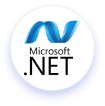
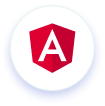
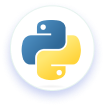
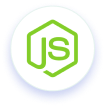

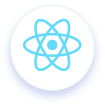
Client Requirement
In today’s dynamic business environment, effective asset management is crucial for organizations across industries. Efficiently managing assets not only ensures operational continuity but also maximizes returns on investments. However, many organizations struggle with disparate systems, manual processes, and lack of centralized visibility into their asset portfolios. To address these challenges, SyanSoft, a leading enterprise, embarked on developing, OptimAsset is a comprehensive Asset Management Portal developed to streamline asset tracking, maintenance, and optimization processes for businesses across various industries.
Objective
EY manages a diverse range of assets including hardware equipment, software licenses, network infrastructure, and digital resources for its clients. With the company’s continuous growth and expanding client base, the existing asset management processes have become fragmented and inefficient. There is a need for a centralized platform that can effectively manage all assets, facilitate seamless communication among teams, and provide actionable insights for strategic decision-making.
Centralized Asset Repository
Develop a user-friendly interface to serve as a centralized repository for storing comprehensive information about all assets owned or managed by EY. This includes hardware specifications, software licenses, maintenance schedules, warranty details, and associated documentation.
Customizable Asset Classification
Implement a flexible classification system that allows assets to be categorized based on various criteria such as type, location, department, ownership, and usage. This enables users to easily search, filter, and retrieve specific assets according to their requirements.
Asset Tracking and Monitoring
Integrate tracking mechanisms to monitor the status, location, and utilization of assets in real-time. Utilize RFID tags, QR codes, or GPS tracking devices to accurately track the movement and usage patterns of physical assets, while implementing logging mechanisms to track software installations, updates, and licenses.
Maintenance Scheduling and Alerts
Implement automated maintenance scheduling functionality to proactively manage asset maintenance tasks such as software updates, hardware inspections, and license renewals. Set up customizable alerts and notifications to remind users about upcoming maintenance activities, warranty expirations, or compliance deadlines.
Collaborative Workflows and Communication
Enable collaborative workflows by facilitating seamless communication and task assignment among different teams responsible for asset management, procurement, maintenance, and disposal. Implement features such as comments, notifications, and task assignments to streamline communication and improve team coordination.
Reporting and Analytics
Develop comprehensive reporting and analytics capabilities to provide actionable insights into asset utilization, performance metrics, compliance status, and financial data. Generate customizable reports and dashboards to help stakeholders make informed decisions regarding asset optimization, budget allocation, and strategic planning.
Security and Compliance
Ensure robust security measures to protect sensitive asset data and maintain compliance with relevant regulations such as GDPR, HIPAA, or ISO standards. Implement role-based access control (RBAC), encryption mechanisms, and audit trails to safeguard data integrity and prevent unauthorized access or data breaches.
Our Approach
Requirements Gathering
Engage stakeholders from various departments to gather requirements and understand pain points in existing asset management processes.
System Design
Design the architecture and user interface of the Asset Management Portal, ensuring scalability, security, and usability.
Development
Develop the application using appropriate technologies and frameworks, focusing on integration capabilities with existing systems.
Testing
Conduct rigorous testing to ensure the reliability, functionality, and performance of the portal across different scenarios.
Deployment
Roll out the application in phases, starting with pilot testing in select departments before full-scale implementation across the organization.
Training and Change Management
Provide comprehensive training to users on how to effectively utilize the application and implement change management strategies to facilitate adoption.
Support and Maintenance
Establish support mechanisms and regular maintenance routines to address issues, implement updates, and continuously improve the system.
Solution
- Implementation of OptimAsset, a cloud-based Asset Management Portal offering real-time visibility and control over assets.
- Customization of the portal to align with EY’s asset management workflows and requirements.
- Integration with existing ERP systems, IT infrastructure, and IoT devices for seamless data exchange.
- Deployment of mobile applications for field technicians to access asset information and update status on-the-go.
Results
Centralized Asset Management
OptimAsset provided EY with a single platform to view, track, and manage all company assets, eliminating the need for disparate spreadsheets and databases.
Improved Maintenance Efficiency
Automated maintenance scheduling and alerts reduced downtime by ensuring timely inspections and repairs, leading to improved asset reliability.
Enhanced Visibility
Real-time analytics and dashboards provided insights into asset utilization, performance, and lifecycle, enabling informed decision-making.
Regulatory Compliance
OptimAsset facilitated compliance with industry regulations and standards through accurate record-keeping and audit trails.
Cost Savings
Optimized asset utilization and maintenance schedules resulted in cost savings for EY, reducing unnecessary expenses and maximizing asset ROI.
Conclusion
The implementation of OptimAsset transformed EY’s asset management practices, enhancing efficiency, compliance, and cost-effectiveness. By leveraging a unified portal tailored to their specific requirements, EY’s successfully addressed their asset management challenges and positioned themselves for future growth and innovation.


Conclusion
The implementation of OptimAsset transformed EY’s asset management practices, enhancing efficiency, compliance, and cost-effectiveness. By leveraging a unified portal tailored to their specific requirements, EY’s successfully addressed their asset management challenges and positioned themselves for future growth and innovation.